Directive leadership exhibits and demonstrates attributes such as time management, punctuality, accuracy, and decisiveness. He worked with the unions to reduce labour costs. Use Directive Leadership When Your Team Members are Unskilled. But the local political leadership might benefit from the collaborative and positive nature of a facilitative style where a group of people like a council needs to be engaged. Even in the most challenging environments, a great leader can coach, guide, manage, inspire, and maintain team spirit and decisions. Directive leadership is a leadership style that gives explicit tasks and objectives to employees without room for variance or creativity. Consultative leadership is task oriented, and focuses on the end result almost as much as the directive leadership style. A critical factor driving success in your career in the corporate world is strong leadership. The autocratic leadership process generally entails one person making all strategic decisions for subordinates. In 1939, psychologist Kurt Lewin and a team of researchers determined that there were three basic leadership styles: Authoritarian (Autocratic), Participative (Democratic) and Delegative (Laissez-Faire). Some of the more common styles include autocratic, bureaucratic, leadership and laissez-faire. Leadership style is the way in which a leader accomplishes his purposes. The directive leader is adept at giving instructions, setting expectations, and establishing timelines and performance standards. 9. Non-directive (low programmability and high capability for autonomy), resulting in consensus or laissez-faire leadership. This is when you should be more directive, telling them how to do it. Below are my comments for each style, I let followers know what is expected of them: I Always agree

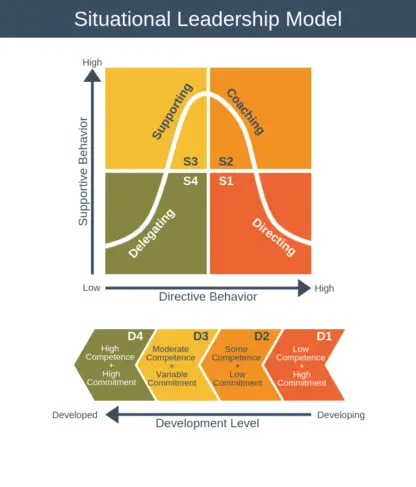
For example, dealing with a difficult employee or putting out a fire at work. How to be a directive leader 1. Directive approach is entirely task-oriented while it assumes task instructions, performance expectations and meeting the set deadline (Adler, 2010). Youre always there to hook them up with whatever resources they need, but then you let them run with it The reason is simple: It works. Leadership styles are more varied in America today than in Asia. This case focuses on the distinctive "paternalistic" leadership and management style of Ren Zhengfei, founder of Huawei Technologies Co., Ltd. (hereinafter Save; Share; October 01, 2018; Directive Versus Inclusive Leadership Styles. Participative leadership.

9.

Vulnerable leadership. Empowering team members to make decisions promotes cooperation and teamwork, and it induces actions that are for the good of the company rather than self-serving. directive leadership style had a significant impact on employee performance in federal medical centre Asaba (F (.011) p<.05). Jeff Bezos Amazon. What Does a Directive Leadership Style Entail? Directive leadership is one of the more common leadership styles, where the leader instructs his followers precisely what to do and how to do it. Although it is one of the most common leadership styles today, directive leadership has somewhat lost its appealit isnt as popular as it once used Creativity is Raise awareness. clarklugatiman4300 is waiting for your help. In a few other In 2005, leadership expert John Maxwell identified influence as the true measure of leadership. When you notice that your team is unmotivated and needs assistance, step in and lead. The role of a leader is, ultimately, to influence team members to accomplish a given task while fostering team cohesion and motivation. The Four Styles of Leadership are:DirectiveSupportiveAffiliativeCoaching

The directive style is the telling style of path-goal theory (Northouse, 2016, p.117). Transactional Leadership. It emphasizes safety and security. To be successful, using your authority is crucial when overseeing a team that has demonstrated 3. 2. Charismatic leadership is one of the seven different leadership styles. List of the Advantages of the Directive Leadership Style 1. A directive (b) approach would oppose the group's stated position. Demonstrating control over subordinates.

Commonly referred to as directive or commanding leadership, its best to use coercive leadership when you need to fix a problem quickly and effectively. THE STYLES OF LEADERSHIP The terminology style is roughly equivalent to the leaders behavior. In the middle is a democratic leadership style. If you vote (b), frustration may get in the way of reason. Directive Style: Here I got the score as considerably High. Satisfaction aside, directive and empowering leadership styles increased task proficiency, while only empowering leadership was effective in increasing proactive behaviors. In some cases, this type of leadership can lead to increases in work quality and decision-making. The leader will normally have the last word in the decision-making processes. #leadership #leaders The leader will give instruction on the task, what is expected, how the work is to be done, and when it needs done by (Northouse, 2016). Visionary leadership. Directive leadership vs. empowering and participative leadership styles Numerous articles have debated the differences between directive and empowering leadership styles. Delegating: Taking a hands-off approach to leadership and allowing group members to make the majority of decisions. Ultimate Leadership Style that is limited to very few leaders in the world. Directive: One of the oldest styles and frequently described as autocratic. This leadership style stems from a more modern school of thought and management philosophy; whereas, the directive leadership style has existed for centuries. Directive leaders aren't necessarily dictatorial or autocratic but they like to think for themselves, make their own decisions and direct the efforts of others.

What are the 3 main leadership styles? At what stage would you use the directive style of leadership? Directive leadership limits and curbs creativity, innovation, ingenuity and fosters goal
:max_bytes(150000):strip_icc()/2795312-article-leadership-styles-5aa98f7ba9d4f9003740b7d1.png)
Add your answer and earn points. Conservative methods repeatedly proved their usefulness and productivity. Week Five Assignment Scoring of a Path-Goal Leadership: Scoring Interpretation: Directive style: 30 Supportive style: 30 Participative style: 26 Achievement-oriented style: 29 1. Participative Leadership. For this reason, it is also called laissez-faire leadership. What is directive leadership? He then took a risk and borrowed $23 billion to help with restructuring. Directive leadership. This is because the leader drives people to stay positive, upbeat, and keep fighting the good fight. There are several benefits to this style when leveraged appropriately. Five styles of leadership. It is most effective when people are not sure about the tasks or when there is a lot of uncertainty within the environment. Democratic Leadership.

For this reason, it is also called laissez-faire leadership. Its a transactional leadership style that demands immediate compliance from team members. Developed by business consultants Kenneth Blanchard and Paul Hersey in the 1960s, delegative leadership is a leadership style where authority figures empower subordinates to exercise autonomy. Pressuring employees to complete targets accurately and efficiently. This leadership style lays out the plan to achieve the goal. These are:Feel your feelingsSeek feedbackPractice mindfulnessKeep an open mindKeep a journalFollow your values Personally managing the completion of tasks.
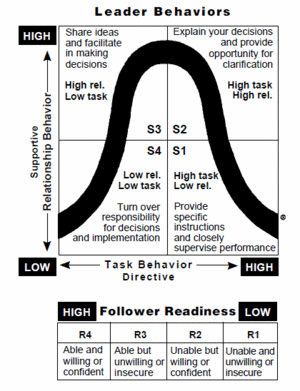
Directive leadership style is best applicable to the hierarchical organizational structures where the there is a high probability of task ambiguity among employees. Leadership is defined in a dictionary as: the position or function of a leader; the ability to lead; or an act or instance of leading. Directive leaders focus more on developing their team members competencies, while supportive leaders focus on developing relationships. The team member were observed to be free and comfortable to hangout with colleagues from the same race. The team members were comfortable carrying out their responsibilities on their various teams. Accordingly, the authors propose a model that allows them to examine simultaneously the relative impact of participative leadership and directive leadership on teachers' performance through the intervening effects of three factors: 10. Directive Leadership Style. The Positive Side. A critical factor driving success in your career in the corporate world is strong leadership. Despite its anti-democratic nature, directive leaders can actually galvanize a team and produce the necessary results as quickly as possible. directive: [adjective] serving or intended to guide, govern, or influence. Those at the top give The result showed that directive leadership style was a strong predictor of employee performance, based on this the study rejected the null hypothesis and accepted the research hypothesis. Focusing on time management. Democratic or participative leadership style. Directive leadership is most effective when leaders are all-knowing and explicit. The primary leadership behaviors that have been determined to be effective include directive, charismatic, supportive, and participative behaviors (Hwang et al., 2015). This is when you should be more directive, telling them how to do it. If your team are new to a task, they will need greater direction as they learn. Leadership style is a leader's approach to providing direction, implementing plans, and motivating people. Answer (1 of 2): The directive leadership style is one of four leadership behaviors characterized by setting clear objectives and rules for your subordinates and ensuring that your expectations and directions are clearly defined and understood. Directive leadership is hierarchical and values consistency, control, and predictability above all else, and goals are achieved through the use of coercion and dominance. Task-Oriented Leadership. We all want that on our projectsplease just do what I say. It soothes fears by giving clear direction in an emergency (Goleman et al., 2002, p. 55). It is one of four leadership traits that sets clearly defined team objectives and rules. Whereas democratic leadership can help in boosting productivity, effectiveness, and creativity. This style is characterized by leaders making decisions for others and expecting followers to follow instructions. 3.2.5 Person-Focused Leadership. Democratic Leadership.
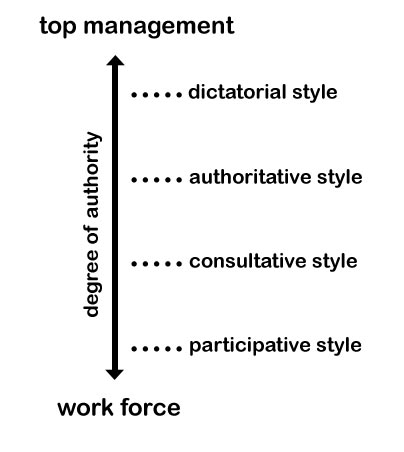
Members of the ethnic group see themselves as sharing cultural traditions and history that distinguish them from other groups. He took risks, he was a transformer, he rescued Ford from their crisis. It is also known as commanding leadership. Directive (high programmability and low capability for autonomy), resulting in autocratic, or benevolent autocratic leadership. The aim of the st

6. Here are five different leadership styles that can define your organizational culture. Ursula Burns, the chairman and CEO of VEON, senior adviser to Teneo, and non-executive director of Diageo since April 2018, makes a point to let her staff see her sweat Directive leadership and participative leadership are two fundamental sets of behaviours leaders employ to manage teams, yet little is known about their antecedents. 10. It is also known as commanding leadership.
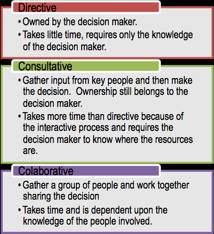
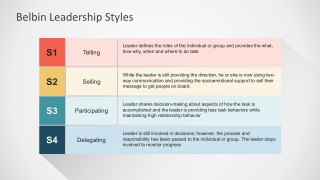
If you are using coaching as a leadership style, in teams or on-on-one, accept that directive and judgmental thinking will happen. It can also be the most appropriate method during crisis situations in which decisions must be made under time constraints or other extraordinary pressures. A leader s use of directive or nondirective behavior depends on: The leader s or subordinates group members ability or competency. Would innovation and creativity stifle the end goal? In 6, democratic leadership (a) is called for. Even in the most challenging environments, a great leader can coach, guide, manage, inspire, and maintain team spirit and decisions. Directive leadership style. Autocratic leadership can help the business to achieve its goals and is also effective for future perspectives. The movie begun by highlighting the comfort in which separate football teams hangout with their teammates.

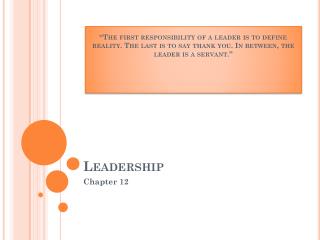

This type of leadership style focuses on building trust within the group and creating emotional bonds that promote a sense of belonging.

Laissez-faire leadership style. Directing as well as formalizing subordinates operations, prepping, work schedules, and setting priorities, categorizing positions and socialization processes for followers, encouraging and expressing competence, tracking and checking up on assigned tasks, clarifying expectations, objectives, as well as management styles are all activities associated with
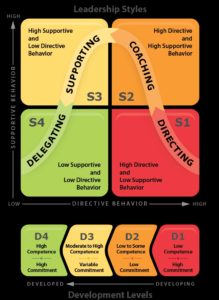
Directive leadership (c) is the best bet. Yes, I always agree with that what I have scored. 11. For affiliative leaders, the team always comes first. Directive leadership style. While the term Directive Leadership may evoke images of a controlling and dogmatic leader, this style simply refers to leadership that provides direction and expecting prompt cooperation from team members.

Both facilitative and directive styles have highly useful features for political leadership. Follow protocol. The directive leadership style is one of four leadership behaviors characterized by setting clear objectives and rules for your subordinates and The directive leadership style was quite common in the past. Good leaders and managers understand when to change their style to suit the situation. If you are directive by tendency, you will tell more than you ask. Participative leadership styles are rooted in democratic theory. Participating: Allowing group members to take a more active role in the decision-making process. The directive leadership style is a leadership style where all the power is with the leaderit is highly centralized and undivided. Directive leaders start with an answer of their Visionary leadership is comparable to Lewins authoritative leadership style. Rules and regulations are the primary emphasis of the directive leadership style. Coercive Leadership Style. 10 Directive Leadership Style Examples Show who is in charge here. Affiliative leaders are very effective in times of stress or when group morale is low. The reason is simple: It works. Directive leadership is an autocratic style in which the leader gives orders and expects full compliance from everyone.
Sitemap 22

 For example, dealing with a difficult employee or putting out a fire at work. How to be a directive leader 1. Directive approach is entirely task-oriented while it assumes task instructions, performance expectations and meeting the set deadline (Adler, 2010). Youre always there to hook them up with whatever resources they need, but then you let them run with it The reason is simple: It works. Leadership styles are more varied in America today than in Asia. This case focuses on the distinctive "paternalistic" leadership and management style of Ren Zhengfei, founder of Huawei Technologies Co., Ltd. (hereinafter Save; Share; October 01, 2018; Directive Versus Inclusive Leadership Styles. Participative leadership.
For example, dealing with a difficult employee or putting out a fire at work. How to be a directive leader 1. Directive approach is entirely task-oriented while it assumes task instructions, performance expectations and meeting the set deadline (Adler, 2010). Youre always there to hook them up with whatever resources they need, but then you let them run with it The reason is simple: It works. Leadership styles are more varied in America today than in Asia. This case focuses on the distinctive "paternalistic" leadership and management style of Ren Zhengfei, founder of Huawei Technologies Co., Ltd. (hereinafter Save; Share; October 01, 2018; Directive Versus Inclusive Leadership Styles. Participative leadership.  9.
9.  Vulnerable leadership. Empowering team members to make decisions promotes cooperation and teamwork, and it induces actions that are for the good of the company rather than self-serving. directive leadership style had a significant impact on employee performance in federal medical centre Asaba (F (.011) p<.05). Jeff Bezos Amazon. What Does a Directive Leadership Style Entail? Directive leadership is one of the more common leadership styles, where the leader instructs his followers precisely what to do and how to do it. Although it is one of the most common leadership styles today, directive leadership has somewhat lost its appealit isnt as popular as it once used Creativity is Raise awareness. clarklugatiman4300 is waiting for your help. In a few other In 2005, leadership expert John Maxwell identified influence as the true measure of leadership. When you notice that your team is unmotivated and needs assistance, step in and lead. The role of a leader is, ultimately, to influence team members to accomplish a given task while fostering team cohesion and motivation. The Four Styles of Leadership are:DirectiveSupportiveAffiliativeCoaching
Vulnerable leadership. Empowering team members to make decisions promotes cooperation and teamwork, and it induces actions that are for the good of the company rather than self-serving. directive leadership style had a significant impact on employee performance in federal medical centre Asaba (F (.011) p<.05). Jeff Bezos Amazon. What Does a Directive Leadership Style Entail? Directive leadership is one of the more common leadership styles, where the leader instructs his followers precisely what to do and how to do it. Although it is one of the most common leadership styles today, directive leadership has somewhat lost its appealit isnt as popular as it once used Creativity is Raise awareness. clarklugatiman4300 is waiting for your help. In a few other In 2005, leadership expert John Maxwell identified influence as the true measure of leadership. When you notice that your team is unmotivated and needs assistance, step in and lead. The role of a leader is, ultimately, to influence team members to accomplish a given task while fostering team cohesion and motivation. The Four Styles of Leadership are:DirectiveSupportiveAffiliativeCoaching  The directive style is the telling style of path-goal theory (Northouse, 2016, p.117). Transactional Leadership. It emphasizes safety and security. To be successful, using your authority is crucial when overseeing a team that has demonstrated 3. 2. Charismatic leadership is one of the seven different leadership styles. List of the Advantages of the Directive Leadership Style 1. A directive (b) approach would oppose the group's stated position. Demonstrating control over subordinates.
The directive style is the telling style of path-goal theory (Northouse, 2016, p.117). Transactional Leadership. It emphasizes safety and security. To be successful, using your authority is crucial when overseeing a team that has demonstrated 3. 2. Charismatic leadership is one of the seven different leadership styles. List of the Advantages of the Directive Leadership Style 1. A directive (b) approach would oppose the group's stated position. Demonstrating control over subordinates.  Commonly referred to as directive or commanding leadership, its best to use coercive leadership when you need to fix a problem quickly and effectively. THE STYLES OF LEADERSHIP The terminology style is roughly equivalent to the leaders behavior. In the middle is a democratic leadership style. If you vote (b), frustration may get in the way of reason. Directive Style: Here I got the score as considerably High. Satisfaction aside, directive and empowering leadership styles increased task proficiency, while only empowering leadership was effective in increasing proactive behaviors. In some cases, this type of leadership can lead to increases in work quality and decision-making. The leader will normally have the last word in the decision-making processes. #leadership #leaders The leader will give instruction on the task, what is expected, how the work is to be done, and when it needs done by (Northouse, 2016). Visionary leadership. Directive leadership vs. empowering and participative leadership styles Numerous articles have debated the differences between directive and empowering leadership styles. Delegating: Taking a hands-off approach to leadership and allowing group members to make the majority of decisions. Ultimate Leadership Style that is limited to very few leaders in the world. Directive: One of the oldest styles and frequently described as autocratic. This leadership style stems from a more modern school of thought and management philosophy; whereas, the directive leadership style has existed for centuries. Directive leaders aren't necessarily dictatorial or autocratic but they like to think for themselves, make their own decisions and direct the efforts of others.
Commonly referred to as directive or commanding leadership, its best to use coercive leadership when you need to fix a problem quickly and effectively. THE STYLES OF LEADERSHIP The terminology style is roughly equivalent to the leaders behavior. In the middle is a democratic leadership style. If you vote (b), frustration may get in the way of reason. Directive Style: Here I got the score as considerably High. Satisfaction aside, directive and empowering leadership styles increased task proficiency, while only empowering leadership was effective in increasing proactive behaviors. In some cases, this type of leadership can lead to increases in work quality and decision-making. The leader will normally have the last word in the decision-making processes. #leadership #leaders The leader will give instruction on the task, what is expected, how the work is to be done, and when it needs done by (Northouse, 2016). Visionary leadership. Directive leadership vs. empowering and participative leadership styles Numerous articles have debated the differences between directive and empowering leadership styles. Delegating: Taking a hands-off approach to leadership and allowing group members to make the majority of decisions. Ultimate Leadership Style that is limited to very few leaders in the world. Directive: One of the oldest styles and frequently described as autocratic. This leadership style stems from a more modern school of thought and management philosophy; whereas, the directive leadership style has existed for centuries. Directive leaders aren't necessarily dictatorial or autocratic but they like to think for themselves, make their own decisions and direct the efforts of others.  What are the 3 main leadership styles? At what stage would you use the directive style of leadership? Directive leadership limits and curbs creativity, innovation, ingenuity and fosters goal
What are the 3 main leadership styles? At what stage would you use the directive style of leadership? Directive leadership limits and curbs creativity, innovation, ingenuity and fosters goal :max_bytes(150000):strip_icc()/2795312-article-leadership-styles-5aa98f7ba9d4f9003740b7d1.png) Add your answer and earn points. Conservative methods repeatedly proved their usefulness and productivity. Week Five Assignment Scoring of a Path-Goal Leadership: Scoring Interpretation: Directive style: 30 Supportive style: 30 Participative style: 26 Achievement-oriented style: 29 1. Participative Leadership. For this reason, it is also called laissez-faire leadership. What is directive leadership? He then took a risk and borrowed $23 billion to help with restructuring. Directive leadership. This is because the leader drives people to stay positive, upbeat, and keep fighting the good fight. There are several benefits to this style when leveraged appropriately. Five styles of leadership. It is most effective when people are not sure about the tasks or when there is a lot of uncertainty within the environment. Democratic Leadership.
Add your answer and earn points. Conservative methods repeatedly proved their usefulness and productivity. Week Five Assignment Scoring of a Path-Goal Leadership: Scoring Interpretation: Directive style: 30 Supportive style: 30 Participative style: 26 Achievement-oriented style: 29 1. Participative Leadership. For this reason, it is also called laissez-faire leadership. What is directive leadership? He then took a risk and borrowed $23 billion to help with restructuring. Directive leadership. This is because the leader drives people to stay positive, upbeat, and keep fighting the good fight. There are several benefits to this style when leveraged appropriately. Five styles of leadership. It is most effective when people are not sure about the tasks or when there is a lot of uncertainty within the environment. Democratic Leadership.  For this reason, it is also called laissez-faire leadership. Its a transactional leadership style that demands immediate compliance from team members. Developed by business consultants Kenneth Blanchard and Paul Hersey in the 1960s, delegative leadership is a leadership style where authority figures empower subordinates to exercise autonomy. Pressuring employees to complete targets accurately and efficiently. This leadership style lays out the plan to achieve the goal. These are:Feel your feelingsSeek feedbackPractice mindfulnessKeep an open mindKeep a journalFollow your values Personally managing the completion of tasks.
For this reason, it is also called laissez-faire leadership. Its a transactional leadership style that demands immediate compliance from team members. Developed by business consultants Kenneth Blanchard and Paul Hersey in the 1960s, delegative leadership is a leadership style where authority figures empower subordinates to exercise autonomy. Pressuring employees to complete targets accurately and efficiently. This leadership style lays out the plan to achieve the goal. These are:Feel your feelingsSeek feedbackPractice mindfulnessKeep an open mindKeep a journalFollow your values Personally managing the completion of tasks.  Directive leadership style is best applicable to the hierarchical organizational structures where the there is a high probability of task ambiguity among employees. Leadership is defined in a dictionary as: the position or function of a leader; the ability to lead; or an act or instance of leading. Directive leaders focus more on developing their team members competencies, while supportive leaders focus on developing relationships. The team member were observed to be free and comfortable to hangout with colleagues from the same race. The team members were comfortable carrying out their responsibilities on their various teams. Accordingly, the authors propose a model that allows them to examine simultaneously the relative impact of participative leadership and directive leadership on teachers' performance through the intervening effects of three factors: 10. Directive Leadership Style. The Positive Side. A critical factor driving success in your career in the corporate world is strong leadership. Despite its anti-democratic nature, directive leaders can actually galvanize a team and produce the necessary results as quickly as possible. directive: [adjective] serving or intended to guide, govern, or influence. Those at the top give The result showed that directive leadership style was a strong predictor of employee performance, based on this the study rejected the null hypothesis and accepted the research hypothesis. Focusing on time management. Democratic or participative leadership style. Directive leadership is most effective when leaders are all-knowing and explicit. The primary leadership behaviors that have been determined to be effective include directive, charismatic, supportive, and participative behaviors (Hwang et al., 2015). This is when you should be more directive, telling them how to do it. If your team are new to a task, they will need greater direction as they learn. Leadership style is a leader's approach to providing direction, implementing plans, and motivating people. Answer (1 of 2): The directive leadership style is one of four leadership behaviors characterized by setting clear objectives and rules for your subordinates and ensuring that your expectations and directions are clearly defined and understood. Directive leadership is hierarchical and values consistency, control, and predictability above all else, and goals are achieved through the use of coercion and dominance. Task-Oriented Leadership. We all want that on our projectsplease just do what I say. It soothes fears by giving clear direction in an emergency (Goleman et al., 2002, p. 55). It is one of four leadership traits that sets clearly defined team objectives and rules. Whereas democratic leadership can help in boosting productivity, effectiveness, and creativity. This style is characterized by leaders making decisions for others and expecting followers to follow instructions. 3.2.5 Person-Focused Leadership. Democratic Leadership.
Directive leadership style is best applicable to the hierarchical organizational structures where the there is a high probability of task ambiguity among employees. Leadership is defined in a dictionary as: the position or function of a leader; the ability to lead; or an act or instance of leading. Directive leaders focus more on developing their team members competencies, while supportive leaders focus on developing relationships. The team member were observed to be free and comfortable to hangout with colleagues from the same race. The team members were comfortable carrying out their responsibilities on their various teams. Accordingly, the authors propose a model that allows them to examine simultaneously the relative impact of participative leadership and directive leadership on teachers' performance through the intervening effects of three factors: 10. Directive Leadership Style. The Positive Side. A critical factor driving success in your career in the corporate world is strong leadership. Despite its anti-democratic nature, directive leaders can actually galvanize a team and produce the necessary results as quickly as possible. directive: [adjective] serving or intended to guide, govern, or influence. Those at the top give The result showed that directive leadership style was a strong predictor of employee performance, based on this the study rejected the null hypothesis and accepted the research hypothesis. Focusing on time management. Democratic or participative leadership style. Directive leadership is most effective when leaders are all-knowing and explicit. The primary leadership behaviors that have been determined to be effective include directive, charismatic, supportive, and participative behaviors (Hwang et al., 2015). This is when you should be more directive, telling them how to do it. If your team are new to a task, they will need greater direction as they learn. Leadership style is a leader's approach to providing direction, implementing plans, and motivating people. Answer (1 of 2): The directive leadership style is one of four leadership behaviors characterized by setting clear objectives and rules for your subordinates and ensuring that your expectations and directions are clearly defined and understood. Directive leadership is hierarchical and values consistency, control, and predictability above all else, and goals are achieved through the use of coercion and dominance. Task-Oriented Leadership. We all want that on our projectsplease just do what I say. It soothes fears by giving clear direction in an emergency (Goleman et al., 2002, p. 55). It is one of four leadership traits that sets clearly defined team objectives and rules. Whereas democratic leadership can help in boosting productivity, effectiveness, and creativity. This style is characterized by leaders making decisions for others and expecting followers to follow instructions. 3.2.5 Person-Focused Leadership. Democratic Leadership.  Members of the ethnic group see themselves as sharing cultural traditions and history that distinguish them from other groups. He took risks, he was a transformer, he rescued Ford from their crisis. It is also known as commanding leadership. Directive (high programmability and low capability for autonomy), resulting in autocratic, or benevolent autocratic leadership. The aim of the st
Members of the ethnic group see themselves as sharing cultural traditions and history that distinguish them from other groups. He took risks, he was a transformer, he rescued Ford from their crisis. It is also known as commanding leadership. Directive (high programmability and low capability for autonomy), resulting in autocratic, or benevolent autocratic leadership. The aim of the st  6. Here are five different leadership styles that can define your organizational culture. Ursula Burns, the chairman and CEO of VEON, senior adviser to Teneo, and non-executive director of Diageo since April 2018, makes a point to let her staff see her sweat Directive leadership and participative leadership are two fundamental sets of behaviours leaders employ to manage teams, yet little is known about their antecedents. 10. It is also known as commanding leadership.
6. Here are five different leadership styles that can define your organizational culture. Ursula Burns, the chairman and CEO of VEON, senior adviser to Teneo, and non-executive director of Diageo since April 2018, makes a point to let her staff see her sweat Directive leadership and participative leadership are two fundamental sets of behaviours leaders employ to manage teams, yet little is known about their antecedents. 10. It is also known as commanding leadership. 
 If you are using coaching as a leadership style, in teams or on-on-one, accept that directive and judgmental thinking will happen. It can also be the most appropriate method during crisis situations in which decisions must be made under time constraints or other extraordinary pressures. A leader s use of directive or nondirective behavior depends on: The leader s or subordinates group members ability or competency. Would innovation and creativity stifle the end goal? In 6, democratic leadership (a) is called for. Even in the most challenging environments, a great leader can coach, guide, manage, inspire, and maintain team spirit and decisions. Directive leadership style. Autocratic leadership can help the business to achieve its goals and is also effective for future perspectives. The movie begun by highlighting the comfort in which separate football teams hangout with their teammates.
If you are using coaching as a leadership style, in teams or on-on-one, accept that directive and judgmental thinking will happen. It can also be the most appropriate method during crisis situations in which decisions must be made under time constraints or other extraordinary pressures. A leader s use of directive or nondirective behavior depends on: The leader s or subordinates group members ability or competency. Would innovation and creativity stifle the end goal? In 6, democratic leadership (a) is called for. Even in the most challenging environments, a great leader can coach, guide, manage, inspire, and maintain team spirit and decisions. Directive leadership style. Autocratic leadership can help the business to achieve its goals and is also effective for future perspectives. The movie begun by highlighting the comfort in which separate football teams hangout with their teammates. 

 This type of leadership style focuses on building trust within the group and creating emotional bonds that promote a sense of belonging.
This type of leadership style focuses on building trust within the group and creating emotional bonds that promote a sense of belonging.  Laissez-faire leadership style. Directing as well as formalizing subordinates operations, prepping, work schedules, and setting priorities, categorizing positions and socialization processes for followers, encouraging and expressing competence, tracking and checking up on assigned tasks, clarifying expectations, objectives, as well as management styles are all activities associated with
Laissez-faire leadership style. Directing as well as formalizing subordinates operations, prepping, work schedules, and setting priorities, categorizing positions and socialization processes for followers, encouraging and expressing competence, tracking and checking up on assigned tasks, clarifying expectations, objectives, as well as management styles are all activities associated with  Directive leadership (c) is the best bet. Yes, I always agree with that what I have scored. 11. For affiliative leaders, the team always comes first. Directive leadership style. While the term Directive Leadership may evoke images of a controlling and dogmatic leader, this style simply refers to leadership that provides direction and expecting prompt cooperation from team members.
Directive leadership (c) is the best bet. Yes, I always agree with that what I have scored. 11. For affiliative leaders, the team always comes first. Directive leadership style. While the term Directive Leadership may evoke images of a controlling and dogmatic leader, this style simply refers to leadership that provides direction and expecting prompt cooperation from team members.  Both facilitative and directive styles have highly useful features for political leadership. Follow protocol. The directive leadership style is one of four leadership behaviors characterized by setting clear objectives and rules for your subordinates and The directive leadership style was quite common in the past. Good leaders and managers understand when to change their style to suit the situation. If you are directive by tendency, you will tell more than you ask. Participative leadership styles are rooted in democratic theory. Participating: Allowing group members to take a more active role in the decision-making process. The directive leadership style is a leadership style where all the power is with the leaderit is highly centralized and undivided. Directive leaders start with an answer of their Visionary leadership is comparable to Lewins authoritative leadership style. Rules and regulations are the primary emphasis of the directive leadership style. Coercive Leadership Style. 10 Directive Leadership Style Examples Show who is in charge here. Affiliative leaders are very effective in times of stress or when group morale is low. The reason is simple: It works. Directive leadership is an autocratic style in which the leader gives orders and expects full compliance from everyone.
Both facilitative and directive styles have highly useful features for political leadership. Follow protocol. The directive leadership style is one of four leadership behaviors characterized by setting clear objectives and rules for your subordinates and The directive leadership style was quite common in the past. Good leaders and managers understand when to change their style to suit the situation. If you are directive by tendency, you will tell more than you ask. Participative leadership styles are rooted in democratic theory. Participating: Allowing group members to take a more active role in the decision-making process. The directive leadership style is a leadership style where all the power is with the leaderit is highly centralized and undivided. Directive leaders start with an answer of their Visionary leadership is comparable to Lewins authoritative leadership style. Rules and regulations are the primary emphasis of the directive leadership style. Coercive Leadership Style. 10 Directive Leadership Style Examples Show who is in charge here. Affiliative leaders are very effective in times of stress or when group morale is low. The reason is simple: It works. Directive leadership is an autocratic style in which the leader gives orders and expects full compliance from everyone.